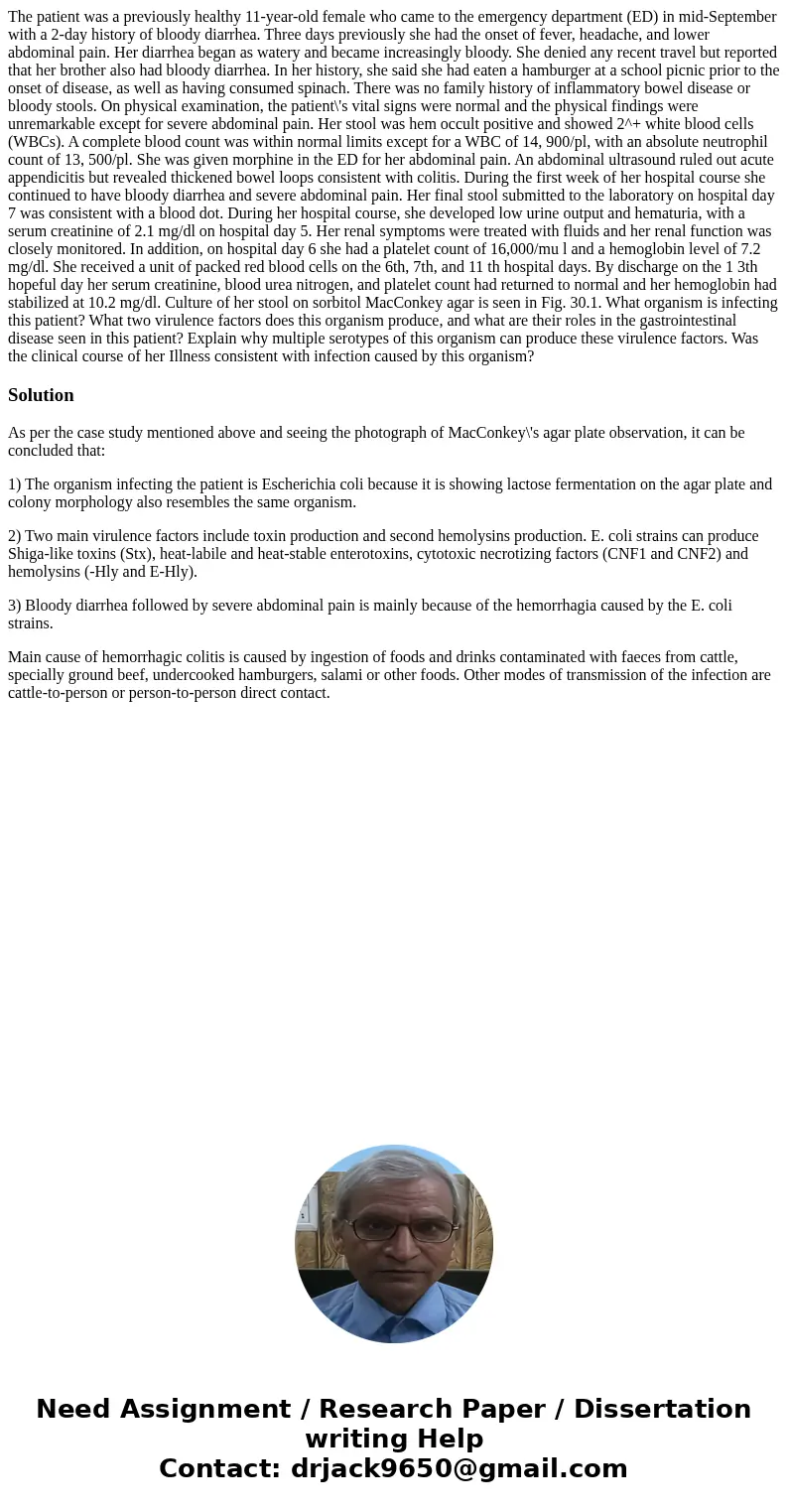The patient was a previously healthy 11-year-old female who came to the emergency department (ED) in mid-September with a 2-day history of bloody diarrhea. Three days previously she had the onset of fever, headache, and lower abdominal pain. Her diarrhea began as watery and became increasingly bloody. She denied any recent travel but reported that her brother also had bloody diarrhea. In her history, she said she had eaten a hamburger at a school picnic prior to the onset of disease, as well as having consumed spinach. There was no family history of inflammatory bowel disease or bloody stools. On physical examination, the patient\'s vital signs were normal and the physical findings were unremarkable except for severe abdominal pain. Her stool was hem occult positive and showed 2^+ white blood cells (WBCs). A complete blood count was within normal limits except for a WBC of 14, 900/pl, with an absolute neutrophil count of 13, 500/pl. She was given morphine in the ED for her abdominal pain. An abdominal ultrasound ruled out acute appendicitis but revealed thickened bowel loops consistent with colitis. During the first week of her hospital course she continued to have bloody diarrhea and severe abdominal pain. Her final stool submitted to the laboratory on hospital day 7 was consistent with a blood dot. During her hospital course, she developed low urine output and hematuria, with a serum creatinine of 2.1 mg/dl on hospital day 5. Her renal symptoms were treated with fluids and her renal function was closely monitored. In addition, on hospital day 6 she had a platelet count of 16,000/mu l and a hemoglobin level of 7.2 mg/dl. She received a unit of packed red blood cells on the 6th, 7th, and 11 th hospital days. By discharge on the 1 3th hopeful day her serum creatinine, blood urea nitrogen, and platelet count had returned to normal and her hemoglobin had stabilized at 10.2 mg/dl. Culture of her stool on sorbitol MacConkey agar is seen in Fig. 30.1. What organism is infecting this patient? What two virulence factors does this organism produce, and what are their roles in the gastrointestinal disease seen in this patient? Explain why multiple serotypes of this organism can produce these virulence factors. Was the clinical course of her Illness consistent with infection caused by this organism?
As per the case study mentioned above and seeing the photograph of MacConkey\'s agar plate observation, it can be concluded that:
1) The organism infecting the patient is Escherichia coli because it is showing lactose fermentation on the agar plate and colony morphology also resembles the same organism.
2) Two main virulence factors include toxin production and second hemolysins production. E. coli strains can produce Shiga-like toxins (Stx), heat-labile and heat-stable enterotoxins, cytotoxic necrotizing factors (CNF1 and CNF2) and hemolysins (-Hly and E-Hly).
3) Bloody diarrhea followed by severe abdominal pain is mainly because of the hemorrhagia caused by the E. coli strains.
Main cause of hemorrhagic colitis is caused by ingestion of foods and drinks contaminated with faeces from cattle, specially ground beef, undercooked hamburgers, salami or other foods. Other modes of transmission of the infection are cattle-to-person or person-to-person direct contact.

 Homework Sourse
Homework Sourse